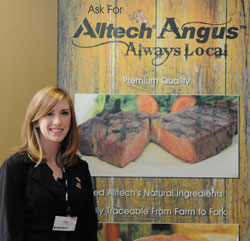 The AgGuidance folks are offering some special customized guidance + auto-section control packages for spraying season. That would be our sponsor, Leica Geosystems. Here’s a list of what they’re offering.
The AgGuidance folks are offering some special customized guidance + auto-section control packages for spraying season. That would be our sponsor, Leica Geosystems. Here’s a list of what they’re offering.
Through June 30, the company is offering three packages pairing guidance and section-control products that cover a wide range of accuracy levels and price points.
Lightbar guidance plus section control
Those who are looking for a simple, cost-effective entry point will find a package assembled with them in mind.This entry-level package features a Leica mojoMINI display, which provides manual guidance, paired with an AS7500 auto-section controller for just $2,500.
Auto steer plus section control
Growers and applicators looking for 6”-8” accuracy may choose a package with the easy-to-install and use Leica mojoGLIDE auto-steer console plus the iNEX color, touch-screen display and auto-section control for a complete auto-steer guidance system designed for spraying applications. This package is affordably priced at $9,980.
RTK auto steer plus section control
Now through the end of June, farmers seeking sub-inch accuracy can acquire a robust, auto-steer system complete with a color display and auto-section control for just $13,480. This specially priced package includes a Leica mojoRTK auto-steer console and base station, and an iNEX color touch-screen display with auto-section control.
“Our customers have a wide range of requirements related to precision technology, and we’re working to provide them with solutions to fit their individual needs,” said Harlan Little, North American business manager for Leica Geosystems Ag. “Each of these packages was developed to be modular and scalable so that our customers can easily add functionality or move components into other vehicles, and all at very economical prices.”


 One of the global partners with Alltech in the upcoming
One of the global partners with Alltech in the upcoming 

 Since it’s still Beef Month I have to mention
Since it’s still Beef Month I have to mention  The
The  The ethanol organization announced today that 28 of its member plants raised $7,395 for local charities of their choice through the Growth Force Now promotion.
The ethanol organization announced today that 28 of its member plants raised $7,395 for local charities of their choice through the Growth Force Now promotion. 